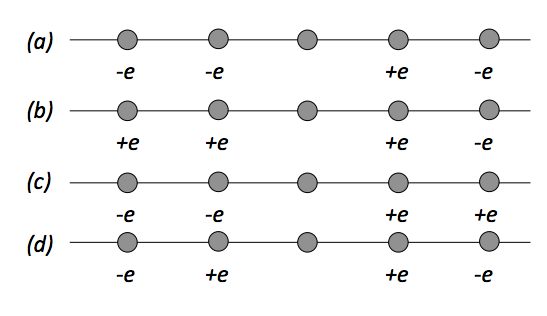Rank the electrostatic force

The figures above show four situations in which five charged particles are evenly placed along an axis. The charge values are known except for the particle in the center, which has the same charge across all four situations. Which situation gives the greatest magnitude of net electrostatic force on the particle in the center?
This section requires Javascript.
You are seeing this because something didn't load right. We suggest you, (a) try
refreshing the page, (b) enabling javascript if it is disabled on your browser and,
finally, (c)
loading the
non-javascript version of this page
. We're sorry about the hassle.
Remember, if the two charges on either of sides attract each other than this attraction will "drive them away" from the middle charge (bring them closer) hence resulting in a loss of net force on the middle charge. Therefore, the arrangement in which none the two attract is the solution. Hence, ( c ) is the answer.